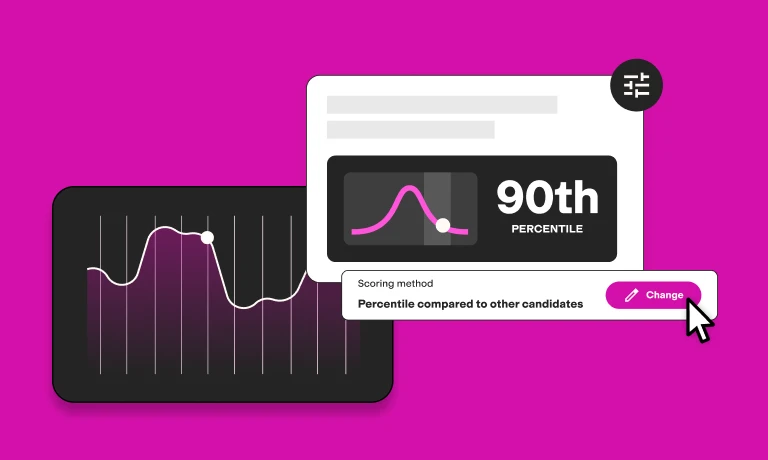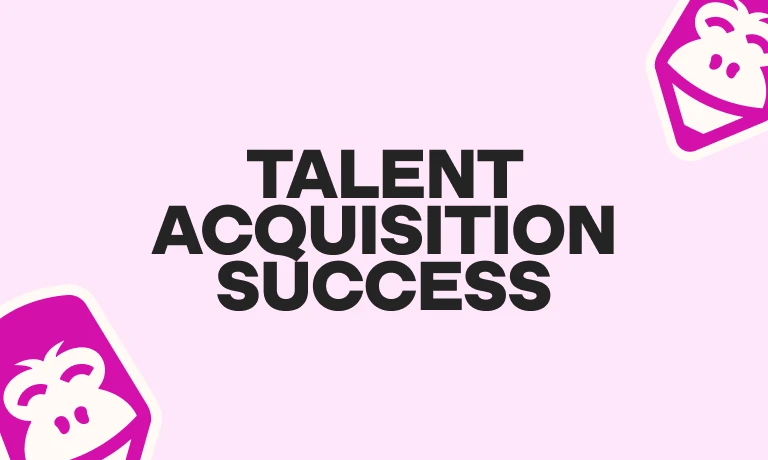How to support ISTP personality types in the workplace
Renowned for being adaptable innovators, the Virtuoso personalities (ISTPs) of the 16 Personalities test are vital for many teams. They have excellent analytical skills and provide innovative solutions to complex problems.
However, ISTPs are introverts who prefer to work alone and always rely on logic over emotion. This can pose challenges during collaborative projects, and their direct communication style can also lead to conflicts that hinder overall productivity.
In this article, we explain the strengths and weaknesses of ISTPs in the workplace while also providing guidance on how to integrate them and help them develop professionally.
Overview of ISTPs in the workplace
ISTPs are characterized by the following core traits:
Introverted (I) - Focus on internal thoughts and ideas, enjoy solitude and deep thinking versus external stimulation, and tend to work best when alone.
Sensing (S) - Focus on reality instead of possibility, keeping their attention on the present and concrete information.
Thinking (T) - Make decisions rooted in rationality, logic, and objective analysis over personal feelings or societal expectations.
Perceiving (P) - Enjoy flexibility in their jobs and life and dislike sticking to plans.
Strengths and contributions to the workplace
Here are the key strengths of ISTPs:
Adaptability: Virtuosos are flexible and excel at adapting to new circumstances. They can effectively tackle new tasks and unexpected situations to provide robust solutions.
Independent and creative: ISTPs are highly independent employees who value freedom. They’re also excellent problem-solvers who can efficiently complete tasks and resolve issues on their own.
Confident and grounded: Virtuosos are confident in their analytical skills and can make decisions quickly in varying scenarios without getting carried away by hypotheticals.
Optimistic: ISTPs are natural optimists who can work well under pressure. They don’t get upset easily, and their light-hearted nature can lift team morale, making them valuable team members in high-pressure scenarios.
Curious: ISTPs are always curious about how things work and gain an in-depth understanding of subjects that interest them. They’re eager to learn more and often develop creative ideas or solutions.
Common challenges and pain points
Here are a few limitations that could affect ISTPs at work:
Difficulty balancing logic and emotion: ISTPs are logical thinkers and can sometimes lack empathy and emotional sensitivity. This could seem cold and insensitive to others, leading to misunderstandings with colleagues.
Struggles with planning: They often don’t have long-term goals, preferring to go with the flow rather than strategically planning and executing as needed.
Excessive risk-taking: ISTPs are naturally spontaneous and prone to taking risks. They may make decisions without properly considering the consequences or outcomes.
Avoid firm commitments: ISTPs can get bored of repetitive tasks or routines, preferring exciting short-term activities. While this flexibility is valuable, it can also make them less reliable when it comes to firm commitments and following through.
Navigating ISTP communication styles and team dynamics
ISTPs are known for their practicality, efficiency, and ability to remain calm under pressure. While this can help teams succeed, their direct approach and need for independence can cause communication challenges and conflicts with team members.
Effective communication strategies for ISTP personality types
Use these four strategies to leverage ISTP’s strengths and create a positive work environment:
Be direct: ISTPs value straightforward communication without unnecessary embellishments. Get to the point in meetings or discussions and set clear expectations, deadlines, and parameters.
Encourage written communication: ISTPs may prefer written communication for complex instructions or information that requires careful consideration. This allows them to process the information at their own pace.
Focus on practical applications: When discussing ideas or plans, emphasize their practical applications and how they can be implemented. Use real-life examples or case studies to illustrate points.
Respect their need for independence: ISTPs prefer autonomy over their tasks and projects. Provide the objectives and necessary resources, then let them figure out the best approach. Additionally, understand their need for personal space and time alone to recharge.
Be patient and open: Understand that ISTPs may need time to make decisions, especially if they need to gather more information. Be open to their feedback and suggestions.
Best practices for integrating ISTP personality types into teams
Implement these best practices to help ISTPs flourish within a team and gain higher levels of satisfaction and productivity:
1. Minimize micromanagement
Avoid micromanaging ISTPs. Trust in their ability to find efficient ways to accomplish tasks. Checking in periodically is fine, but give them the space to work independently.
Use a results-oriented approach. Focus on the outcomes of their work rather than the process they use to get there, as long as the results meet the team’s standards.
2. Facilitate individual contributions within the team
Acknowledge and appreciate the unique contributions that ISTPs bring to the team. They may not seek the spotlight, but recognizing their efforts will encourage continued contribution.
Also, create an environment where they feel comfortable sharing their ideas and suggestions.
3. Encourage collaboration while respecting independence
While ISTPs enjoy working independently, encourage collaboration by pairing them with team members who complement their skills and working style.
Highlight the benefits of teamwork for achieving common goals. Use clear metrics to measure performance. ISTPs appreciate knowing how their contributions directly affect team and organizational goals.
Tips for navigating ISTP challenges
To avoid misunderstandings and conflicts involving ISTPs at work:
Communication gaps: ISTPs might sometimes appear aloof or detached, especially in more social or emotionally charged situations. Encourage open communication and try to understand their perspective without forcing them into uncomfortable situations.
Resistance to abstract concepts: Virtuosos might struggle with or show disinterest in abstract concepts or theoretical discussions. When possible, relate these discussions to practical applications.
Not open to emotional arguments: ISTPs can have difficulty understanding emotional reasoning and are more convinced by factual, logical information. Support your points with data, facts, and empirical evidence. This appeals to their analytical nature.
Unclear boundaries: ISTPs can get stressed when they are forced to share more about their personal lives than they’re comfortable with. Keep interactions professional and focused on the task or project at hand.
The best insights on HR and recruitment, delivered to your inbox.
Biweekly updates. No spam. Unsubscribe any time.
How to motivate ISTP employees and keep them engaged
ISTPs can be very loyal and become a crucial part of the company. To maximize their potential, it’s important to know what motivates them at work and how to keep them engaged.
What motivates ISTP personality types at work
ISTPs are motivated by the opportunity to work on practical, hands-on projects. They excel in roles that allow them to interact directly with the physical world, whether it’s repairing equipment, constructing models, or engaging in any activity that requires a tangible outcome.
Problem-solving is also at the core of ISTPs’ motivation. They’re deeply driven by opportunities to troubleshoot and find solutions to complex issues and appreciate dynamic work environments where they can tackle different tasks and projects.
Strategies for engaging ISTP types
To engage ISTP employees, try these strategies:
Create a practical work environment: Ensure the work environment is pragmatic and focused on productivity. ISTPs appreciate a no-nonsense approach to work where they can concentrate on tasks without bureaucracy.
Respect their need for privacy: ISTPs are highly self-motivated when they have control over their work. You can offer a flexible work schedule, solo tasks or projects, and the ability to choose their own tools and resources.
Remote work is a great option for ISTPs as they get the space and time to work independently, while also contributing towards team goals. This can lead to higher job satisfaction and productivity.
Recognize their achievements: Although ISTPs might not seek public recognition, they appreciate knowing their work is valued. A straightforward acknowledgment of their success can be highly motivating.
Focus on the facts: Communicate clearly and directly with ISTPs. They appreciate brevity and are more responsive to factual, concise information. Avoid unnecessary details or overly abstract concepts unless they directly relate to the task.
Guidance on personal development and career growth for ISTPs
To create a positive work environment for Virtuosos, you can offer them opportunities for growth:
1. Encourage learning and networking
ISTPs are naturally curious and enjoy learning new skills. Support their growth by providing access to hands-on training, workshops, and courses that allow them to enhance their knowledge.
Also, encourage ISTPs to join professional organizations or networking groups where they can get opportunities for peer-to-peer learning. Assign ISTPs to projects that challenge them and require the use of new or developing skills. This approach aligns with their preference for learning by doing.
2. Enhance their interpersonal skills
Offer resources to help ISTPs develop emotional intelligence, including managing emotions and navigating interpersonal relationships more effectively. Pair ISTPs with mentors who can guide professional development, including improving communication and teamwork skills.
3. Foster their problem-solving skills
Provide ISTPs with challenging problems to solve. They thrive in environments where they can use their analytical and practical skills to find solutions.
Encourage them to participate in cross-functional teams where they can use their strong problem-solving abilities on diverse challenges while also improving their collaboration skills.
4. Offer constructive feedback
Schedule regular one-on-one meetings to provide feedback on their work and discuss their development or progress. Ensure feedback is specific, constructive, and actionable.
Acknowledge and reward ISTPs for their contributions. This recognition can be private or public, depending on their personal preference.
Maximize ISTP potential with TestGorilla
ISTPs or Virtuosos can greatly contribute to a team’s adaptability and problem-solving capabilities. Leveraging their strengths can enhance productivity and innovation, but it’s also important to mitigate their weaknesses so they can flourish.
You can overcome challenges by using direct communication and assigning practical, hands-on, and challenging tasks that ISTPs can perform independently.
TestGorilla has tailored talent assessments that can help you evaluate Virtuoso candidates and employees. This ensures you can provide the support they need and capitalize on their potential.
Want to learn more about TestGorilla? Sign up for a demo or create a free account today.
You've scrolled this far
Why not try TestGorilla for free, and see what happens when you put skills first.


















